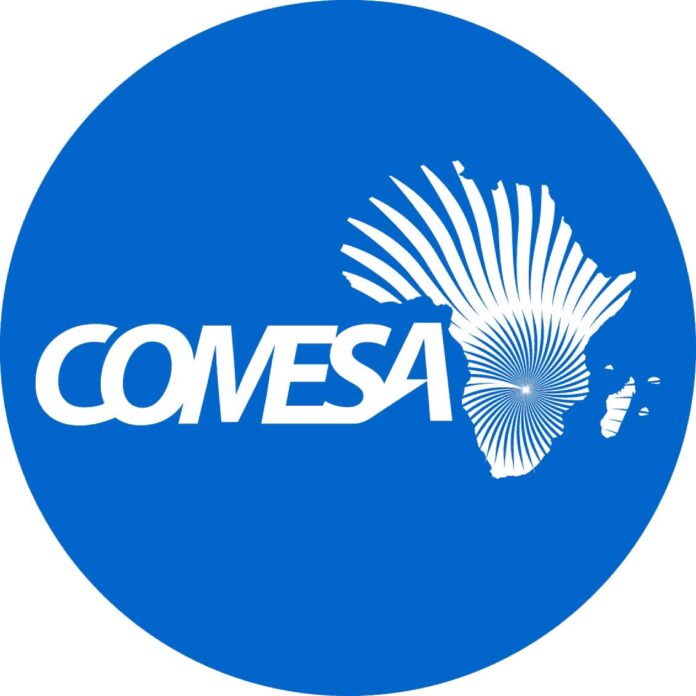Twenty-four years ago, the Common Market for Eastern and Southern Africa (COMESA) transformation from the Preferential Trade Area for Eastern and Southern Africa (PTA).
A high-level COMESA delegation led by Secretary General Chileshe Kapwepwe marked the 24th anniversary of COMESA in Egypt while attending the Africa 2018 Forum organized by the COMESA Regional Investment Agency (RIA) in partnership with the government of Egypt.
The two-day event kicked off on Friday and brought together more than 3,000 delegates including heads of State to advance intra Africa investments.
The COMESA delegation used the Africa 2018 Forum in Sharm el Sheikh and the Intra -Africa Trade Fair in Cairo, 11 – 17 December 2018 to showcase its contribution to economic growth and development of its Member States while directly engaging with stakeholders inside meetings and expos.
Among the notable developments of COMESA in the last 24 years is the expansion of the regional economic bloc from 19 to 21 Member States following the admission of Tunisia and Somalia in July 2018. The bloc is now the largest in the continent with a combined gross domestic product of $769 billion and a population of 560 million people.
It is also the REC that integrates most of the countries of the Great Lakes region, covering Central, Eastern and Southern Africa, with significant need for enhanced cross-border economic activities.
According to a press release, on this anniversary, Secretary-General cites the digitization of trade facilitation instruments as the high priority with technical work on launching a digital Certificate of Origin and a Regional Trade Portal now completed.
“We estimate that digitization of our trade facilitation instruments will create new trade worth $12.3 billion annually,” she said. “This will facilitate trade, connectivity, reduce our transaction time and costs, and certainly increase efficiency in our various interventions.”
Research indicates that once the digital free trade area is fully implemented by all Member States, the region could annually gain US$ 17.5 billion in intra-COMESA exports.
Among notable achievements that COMESA is celebrating at 24 years is the resolution of 98% of all reported non-tariff barriers (NTBs) that inhibited regional trade. These relate to the liberalization of import licensing, removal of foreign exchange restrictions, taxes on foreign exchange, import and export quotas, roadblocks, easing of Customs formalities, extending times border posts are open, the creation of One-Stop-Border-Posts.
So far 15 of the 21 Member States are now operating under the COMESA Free Trade Area on a duty-free-quota-free basis.
Many of COMESA’s flagship programmes are now in use regionally and beyond. These include the COMESA Yellow Card Insurance Scheme, a regional Third-Party Motor Vehicle Insurance Scheme that provides legal liability cover and compensation for medical expenses resulting from road traffic accidents caused by motorists visiting countries in the Scheme.
The Regional Customs Guarantee Scheme is another acclaimed customs transit regime that facilitates the movement of goods under customs seals in the COMESA region.
Others are the COMESA Carrier’s License which allows commercial goods vehicles to use one license to operate in all Member States; and the COMESA Virtual Trade Facilitation System (CVTFS) which is an online system that integrates other COMESA trade facilitation instruments in one platform.
Uniform Road user charges and Simplified Trade Regime for small cross-border traders are now in operation the COMESA Member States. These instruments have helped propel intra-COMESA trade from US$ 3 billion in 2000 to over US$ 21 billion.
Equally, a robust stable of autonomous COMESA institutions has been established and grown to viable entities that support regional integration across the Member States.
These are: COMESA Court of Justice, Federation of Women in Business (FEMCOM), COMESA Business Council, Regional Investment Agency, COMESA Monetary Institute, COMESA Competition Commission, the PTA Reinsurance Company (ZEPRE), COMESA Clearing House, the Trade and Development Bank formerly PTA Bank, the Africa Leather and Leather Products Institute and the African Trade Insurance Agency.
The key challenges experienced within the period is mainly of financing regional integration programmes whereby 65% is derived from development partners.
Now, a resource mobilization strategy has been developed and approved by the Council of Ministers in November this year. The strategy is Member-State owned and driven to ensure the sustainability of financing of regional integration programmes.
Source: EABW
COMEAS marks 24th anniversary
RELATED ARTICLES




